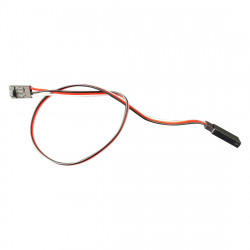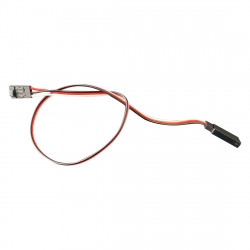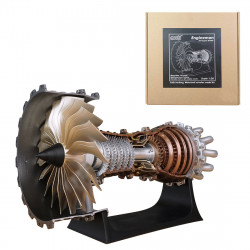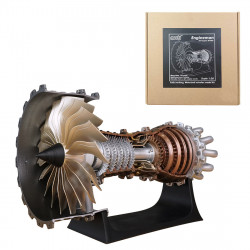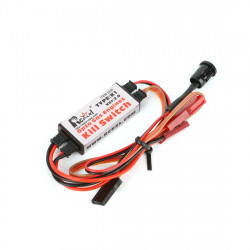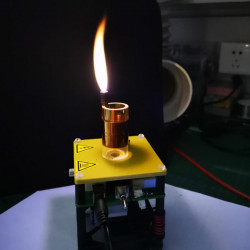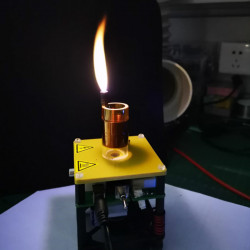
7 Simple Steps to Extend the Life of Your RC Car Batteries
The performance of your remote control (RC) car is primarily dependent on how well its battery works.
You understand how annoying it may be if you've ever visited a track and discovered that, if you're lucky, the battery died after 20 minutes. In that case, you'll either need a replacement or have to leave for home, ending your afternoon.
Fortunately, you can get a lot more play time out of your car by just taking good care of your batteries, which even extends the life of the RC car.
Get ready to enhance your RC car experience to a whole new level—this tutorial will tell you how!
Understanding RC Car Battery Basics: Breaking Down LiPo and NiMH Batteries
Understanding the fundamentals of your RC car battery is essential to reasonable maintenance procedures.
RC car design mainly uses two battery types: nickel-metal hydride (NiMH) and lithium polymer (LiPo).
Each has unique benefits and needs different maintenance. You may find out which your automobile uses by looking at the label on the battery pack or by consulting the instructions that came with it.
Lithium Polymer (LiPo) Batteries: Powering Champions
- Stored Energy & Performance: Give your RC car quick power boosts by storing a significant quantity of energy in a small, light package.
- Care requirements: Because it is sensitive to overcharging and overheating, it must be handled carefully.
Nickel-Metal Hydride (NiMH) Batteries: Durable Energy Stalwarts
- Stored Energy & Performance: These provide a more steady, slower power supply, are heavier, and are less sensitive.
- Care Requirements: Compared to LiPo batteries, NiMH batteries are more resilient and require less maintenance.
Even though these battery kinds differ in a few significant ways, there isn't truly a "best" kind. It truly depends on what you want your automobile to achieve and what it is capable of.
Nevertheless, both require proper maintenance to function correctly, which is the focus of the following sections of this tutorial—all the information you need to maximize battery life.
Let's dig into the tips.
Step One: Proper Charging Techniques
It's crucial how you charge your battery.
For instance, you run the danger of trickle-charging your battery and breaking the hardware if you use a low-voltage charger that isn't compatible with its power levels.
Alternatively, using the incorrect charger type, overcharging, or allowing the battery to overheat can all have the same effect.
The best course of action in this situation is to make sure you're using the appropriate charger for your battery.
Use a LiPo-specific charger that is appropriate for the number of cells and charging rate of your LiPo battery.
To prevent overcharging of NiMH batteries, choose chargers with peak detection, which cut off charging as soon as the battery is full.
A note on overcharging
In severe situations, overcharging may cause edema, overheating, or a reduction in battery life. It is generally advised to charge batteries at 1C, which is equivalent to multiplying their capacity by one; for example, a 2000mAh battery should be charged at 2 amps.
For more detailed directions and charging rates, consult the battery manufacturer's instructions. Make careful to keep an eye on the clock if it states, "charge for four hours."
Step Two: Balanced Discharging
The idea of balanced discharge is as essential as appropriate charging.
Respecting discharge levels, which are all too frequently disregarded, can shield batteries from harm and guarantee their longevity and continuous operation.
The practice of running a battery so low that it actually exceeds the safe lower voltage limit that the circuitry has established is known as "over-discharging." This can result in shorter run durations, poorer performance, and even irreversible damage.
The ideal discharge voltage for LiPo batteries is 3.0 volts per cell, while the perfect discharge voltage for NiMH batteries is 1.0 volts per cell. A battery checker can verify this.
Fortunately, many electronic speed controllers (ESCs) have a low-voltage cutoff feature. This feature is meant to protect your battery from damaging over-discharge, but make sure you're checking.
If your LiPo or NiMH battery has an LVC setting, make sure your ESC is configured to meet its unique needs.
Step Three: Appropriate Storage Practices
To protect the health of RC car batteries, proper storage procedures are essential. What you should know is as follows:
LiPo batteries should never be kept wholly charged; they require perfect, dry storage. The storage goal should be 40–60% of the overall capacity.
NiMH batteries should be stored at room temperature and in a dry location. Unlike LiPo batteries, they can withstand full-charge storage.
RC batteries should be stored in sealed containers and a secure location away from bumps and knocks. This is especially important if you have spares or replacements (especially LiPo).
All of this is done to make sure the batteries have their balanced cell voltages and avoid becoming over-discharged, which might harm them irreparably.
If you won't be using your RC car for a long time, remove the batteries and store them properly.
As previously stated, maximizing storage procedures dramatically extends the life and dependability of your batteries, ensuring that they are prepared for use whenever you are!
Step Four: Regular Battery Cleaning
You say, cleaning batteries?
Indeed, if you have never done it before, it could seem like an odd notion, but it's actually one of the nicest things you can do, especially with RC cars.
This is because when RC cars are driven outside, they gather dust, filth, and grime from their surroundings and other parts, which might eventually reach the battery. The batteries in RC cars aren't concealed like those in TV remotes.
Oils, lubricants, and dirt can damage the battery and reduce the vehicle's overall performance. Thankfully, you can wipe off your batteries occasionally with a clean, dry cloth, making sure there is no buildup of dirt or grease.
The battery's terminals should be kept clean above all else since corrosive deposits can impede power flow.
Step Five: Periodical Battery Inspection
As with everything related to RC vehicle maintenance, it's critical to routinely inspect your car's parts to determine what's happening, the state of your hardware, and whether any adjustments, repairs, or replacements are necessary.
Included are batteries.
You're taking proactive precautionary steps to avert possible malfunctions or problems by routinely checking your RC car battery.
You're looking for any visible signs of damage, such as swelling, punctures, or leaks, which could indicate severe problems.
Additionally, watch for odd battery behaviour. A sharp decline in performance could indicate damage or deterioration of the battery.
Although it won't take much of your time, this preventive measure can save you from unforeseen issues.
Step Six: Temperature Management
You've undoubtedly heard that temperature has a significant impact on batteries. You've probably noticed this if you've ever been outside in freezing weather and noticed that your phone, even when fully charged, abruptly shuts off.
Consequently, maintaining the health and extending the life of your RC car battery depends heavily on efficient temperature control.
Low temperatures can lead to decreased performance, while high temperatures can create overheating problems.
Maintaining your battery at a temperate temperature, usually between 20 and 25°C (68 and 77°F), is excellent practice. To avoid overheating, let your RC car's battery cool down after a drive before charging or using it again.
Step Seven: Safe Handling and Use
Lastly, using and handling your RC vehicle battery safely is essential for both your safety and the battery's preservation.
Even though we're confident you won't intentionally harm your automobile by flinging it around or dropping objects on it, a little more care and attention can help you avoid potentially serious errors.
Although it may seem obvious, never puncture, distort, or disassemble your battery since this could result in hazardous chemical leakage or even fire.
Prevent the battery from short-circuiting, which can occur when its terminals make direct contact. Always use caution when connecting and disconnecting.
To avoid potential risks, discontinue operation right once if there is excessive heat or swelling during charging or use.
Conclusion
And that's it.
As you can see, keeping your RC car battery in good condition requires a careful balancing act between safe handling, periodic inspections, balanced temperature control, and appropriate charging and discharging methods.
If you incorporate these habits into your RC car ownership experience, your batteries will continue to operate at their best and last longer.
With these pointers in hand, it's time to prepare and guarantee your remote-controlled car will work at its best for many trips.
Check out V8engineforsale.com, a reliable website dedicated to meeting your RC car needs, for a variety of high-performance RC cars and accessories.
